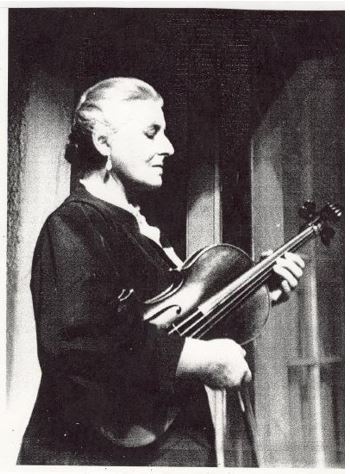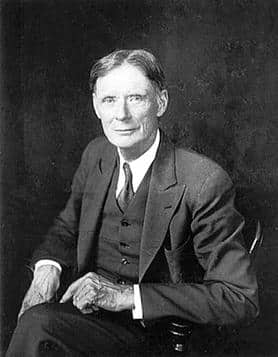
Louise Lincoln Kerr
Louise Kerr’s desert home was a creative haven for artists, musicians and writers from all walks of life.

A trailblazing woman, one of the few female composers and professional musicians of her day, Louise Lincoln Kerr arrived in Arizona in 1936. Daughter of John C. Lincoln, financier and developer of the Camelback Inn, Louise built her home on 47 acres of pristine desert and citrus groves in the small town of Scottsdale, launching a haven and creative center for artists, musicians and writers from all walks of life.
During the early years of the 20th century, when most women were prohibited from gaining higher education or holding a position in a professional orchestra, Louise forged ahead. She studied with Columbia University professors and won several composition awards at Barnard College. By 1913 she was invited to join the violin section of the Cleveland Symphony Orchestra, becoming one of the first two women and one of the orchestra’s youngest members
Fascinated by music in all its forms, Louise was also at the forefront of the recording industry, working at the Aeolian Recording Company of New York, proofing piano rolls for player pianos and then advancing to the sound booth as a trouble shooter for the first disk recordings of modern music. It was there that she met such pianists and composers as Sergei Prokofiev, Igor Stravinsky and George Gershwin.
She composed several pieces incorporating Hopi themes, including “Enchanted Mesa,” possibly one of the first symphonic pieces to incorporate North American indigenous instrumentation and techniques. “Enchanted Mesa” was performed in 1955 by the Phoenix Symphony, the orchestra she helped co-found in 1947.
She was instrumental in the establishment of numerous Arizona arts and cultural groups including The Scottsdale Center for the Arts, Phoenix Chamber Music Society (1960), and the Phoenix Cello Society. Her home and studio was the center for concerts, lectures plays, parties and creation, welcoming artists, musicians and writers to study, practice and perform in the studio.
A major benefactor to the ASU School of Music, Louise left her home and studio to the school shortly before her death in 1977. She also left a massive collective of sheet music to the ASU Hayden Library and contributed funds to create a scholarship and fellowship for ASU music students in her name.
Louise Lincoln Kerr died on December 10, 1977 at the age of 85. She was inducted into the Arizona Women’s Hall of Fame on October 21, 2004.
The Lincoln Family
Louise was the daughter of John Cromwell Lincoln, an electrical engineer, inventor and innovator. He is well-known for using a $200 investment to start Lincoln Electric Company, going on to earn over 50 patents for new technology he created, from welding metals to electric motors.
Moving to Arizona in 1930 for the health of his wife, Helen, who suffered from tuberculosis, he went on to create and evolve some of the state’s most well-known businesses and facilities. His investment in the Valley brought more opportunities to Arizona, in a similar way that Louise’s efforts developed the arts and culture of the state.
John played a significant role in the land development and construction for the Camelback Inn, which opened in 1936 and became a hotspot for celebrities and politicians visiting the Valley. The hotel was designed to celebrate the Southwestern and Native American influences of the region instead of the common cowboy and ranching themes frequently used at area resorts. Located in remote inaccessible desert at the base of Camelback Mountain, Lincoln paid for a road that started at Scottsdale Road to the east, which he named Lincoln Drive. Once marking the north eastern border of the small town known as Scottsdale, today’s bustling traffic on Lincoln and Scottsdale Roads are testament to this man’s remarkable vision.
Lincoln and Helen donated funds in 1938 to Desert Mission, an organization providing accessible medical, social and religious services in the Sunnyslope area. The financial gift was utilized to purchase the land to make Desert Mission’s new home, the first medical clinic and emergency room in the area. Due to his vast contributions to the expenses and success of the facilities, Desert Mission was renamed John C. Lincoln North Mountain Hospital in 1954.
